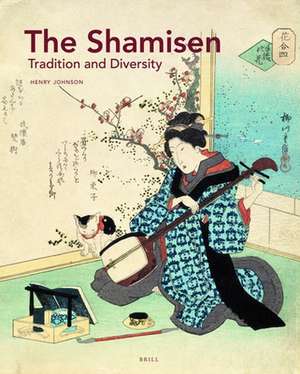The <i>Shamisen</i>: Tradition and Diversity
Autor Henry Johnsonen Limba Engleză Hardback – 6 dec 2009
This book, which is based on the author’s field research in Japan, is a history of the shamisen. It locates the instrument within its various social and cultural contexts, and includes accompanying illustrations (e.g., woodblock prints, photographs and illustrations) to help show visually the place of the instrument in traditional and modern Japan.
Preț: 559.40 lei
Preț vechi: 682.20 lei
-18% Nou
Puncte Express: 839
Preț estimativ în valută:
107.09€ • 111.32$ • 88.79£
107.09€ • 111.32$ • 88.79£
Carte indisponibilă temporar
Doresc să fiu notificat când acest titlu va fi disponibil:
Se trimite...
Preluare comenzi: 021 569.72.76
Specificații
Recenzii
"Drawing on a diverse range of primary and secondary sources, Johnson has clearly conducted a great deal of research on practically all aspects of the shamisen. He meticulously documents the manufacturing process and component parts, accessories, grades, scales and tuning, playing techniques, and notation systems of the shamisen while also including discussion on the organology and ehnography of the instrument...The depth and tremendous detail in the information, images and diagrams presented ensures that [this book] is a fundamental contribution to the literature on the shamisen in English. I would highly recommend this book to anyone interested in the shamisen or more broadly, in Japanese music and culture."
Catherine Hallett, New Zealand Journal of Asian Studies 15.1 (June 2013)
Catherine Hallett, New Zealand Journal of Asian Studies 15.1 (June 2013)
